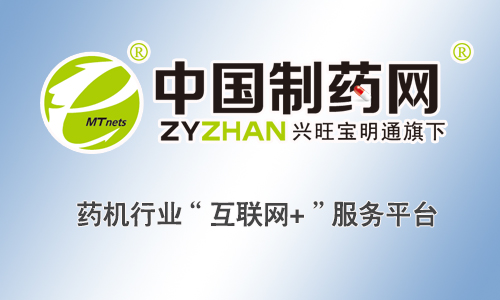Adjustable 3D bio-printing ink or help with drug development
[ China Pharmaceutical Network Technology News ] 3D printing bio-ink can be adjusted to show different mechanical properties and support the growth of human stem cells. Since agarose is non-toxic to living organisms, this material often acts as a support material in stem cell research. It is also the subject of many other medical research in the 3D printing industry.
Researchers at Queensland University of Technology (QUT) in Australia believe that 3D bioprinters may cause "the next pharmacy revolution," providing humans with more reliable and effective drug treatments while making animal testing a thing of the past. This view was supported by a recent study by the QUT team, which was conducted in collaboration with the University of South Australia, the University of Freiburg and the Aachen University of Technology in Germany.
In the pharmaceutical industry, only 10% to 15% of drugs are finally available. The main reason for the failure is that the drug cannot pass the clinical trial. In preclinical trials, animals are often used to test drugs. Since most of the drugs that reach the clinical trial stage through animal testing are discarded, one needs to find a more effective drug testing method.
In a joint study by QUT, the researchers showed a bio-ink that can be 3D printed. This ink can be adjusted to exhibit different mechanical properties and support the growth of human stem cells. The need for multiple mechanical properties is due to the different environments required to grow different types of cells. For example, heart tissue is elastic and the liver is soft and compressible.
Agarose extracted from algae is used as the base material for QUT's bio-ink. Since agarose is non-toxic to living organisms, this material often acts as a support material in stem cell research. It is also the subject of many other medical research in the 3D printing industry.
However, agarose itself cannot be adjusted to have different mechanical properties. To do this, the researchers added an acid salt to it. This hybrid material was called CA throughout the study and they were then 3D printed into a cylindrical shape. The researchers also prepared a sample of natural agarose and then seeded the cells on both gels for comparison. After 7 days of culture, the CA60 Coll 3D printed bio-ink solution showed the highest rate of viable cell proliferation.
“This is another step towards printing complex living structures. We believe that the most important possible outcome of this work is not organ implants. It has been proven that 3D cell printing is a useful technique in drug development and can be reduced animal testing, as well as new treatments will be faster and safer to market, "the researchers explained.
The study has been published in the journal Advanced Healthcare Materials.

(Adjustable 3D bio-printing ink or help drug development) Source: Tiangong Society
Researchers at Queensland University of Technology (QUT) in Australia believe that 3D bioprinters may cause "the next pharmacy revolution," providing humans with more reliable and effective drug treatments while making animal testing a thing of the past. This view was supported by a recent study by the QUT team, which was conducted in collaboration with the University of South Australia, the University of Freiburg and the Aachen University of Technology in Germany.
In the pharmaceutical industry, only 10% to 15% of drugs are finally available. The main reason for the failure is that the drug cannot pass the clinical trial. In preclinical trials, animals are often used to test drugs. Since most of the drugs that reach the clinical trial stage through animal testing are discarded, one needs to find a more effective drug testing method.
In a joint study by QUT, the researchers showed a bio-ink that can be 3D printed. This ink can be adjusted to exhibit different mechanical properties and support the growth of human stem cells. The need for multiple mechanical properties is due to the different environments required to grow different types of cells. For example, heart tissue is elastic and the liver is soft and compressible.
Agarose extracted from algae is used as the base material for QUT's bio-ink. Since agarose is non-toxic to living organisms, this material often acts as a support material in stem cell research. It is also the subject of many other medical research in the 3D printing industry.
However, agarose itself cannot be adjusted to have different mechanical properties. To do this, the researchers added an acid salt to it. This hybrid material was called CA throughout the study and they were then 3D printed into a cylindrical shape. The researchers also prepared a sample of natural agarose and then seeded the cells on both gels for comparison. After 7 days of culture, the CA60 Coll 3D printed bio-ink solution showed the highest rate of viable cell proliferation.
“This is another step towards printing complex living structures. We believe that the most important possible outcome of this work is not organ implants. It has been proven that 3D cell printing is a useful technique in drug development and can be reduced animal testing, as well as new treatments will be faster and safer to market, "the researchers explained.
The study has been published in the journal Advanced Healthcare Materials.
A seedbed or seedling bed is the local soil environment in which seeds are planted. Often it comprises not only the soil but also a specially prepared cold frame, hotbed or raised bed used to grow the seedlings in a controlled environment into larger young plants before transplanting them into a garden or field. A seedling bed is used to increase the number of seeds that germinate.
Greenhouse Seedling Bed,Stainless Greenhouse Seedling Bed,Greenhouse Seedling Nursery Bed
JIANGSU SKYPLAN GREENHOUSE TECHNOLOGY CO.,LTD , https://www.spgreenhouse.com